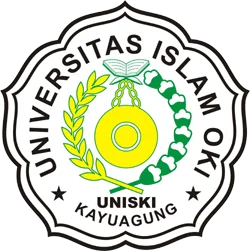Extending Students' Speaking Skills in The Eleventh-Grade by Using Round Robin Technique (R2T)
DOI:
https://doi.org/10.61994/jee.v1i2.373Keywords:
Round Robin technique (R2T), Speaking skill,, Descriptive text, Experimental ResearchAbstract
This study was aimed to find out whether or not there was any significant difference in speaking skill between the students’ who were taught by using Round Robin technique and those who were not. There were 60 students of eleventh-grade students of SMA Negeri 7 Prabumulih involved in this study as the sample. They were divided into two groups, experimental and control groups, both groups consisted of 30 students. This study used quasi non-equivalent group design. The experimental group were taught by using Round Robin technique meanwhile the control group were taught by using lecturing method. The result showed that the mean score of experimental groups increased from 70,88 in pre-test to 78,67 in post-test. Furthermore, the result of independent t-test from experimental group and control group shown that the t-obtained was 2,625 and it was higher than t-table 1,9977. It means that there was any significant difference between experimental and control groups which was caused by Round Robin technique given to the experimental group. It can be concluded that there was significant difference between students who were taught using Round Robin technique and students who were not.
References
Amoah, S., & Yeboah, J. (2021). The speaking difficulties of Chinese EFL learners and their motivation towards speaking the English language. Journal of Language and Linguistic Studies, 17(1), 56-69.
Asari, S., Ma’rifah, U., & Arifani, Y. (2018). The use of cooperative round robin discussion model to improve students’ holistic ability in TEFL class. International Education Studies.
Barkley, E. (2012). Collaborative learning techniques. Bandung: Nusa Media.
Brown, H. D. (2015). Teaching by principles and interactive approach to language pedagogy (4th ed.). New Jersey: Prentice Hall Inc.
Cox, J. (2020). How to Use the Round Robin Discussion Teaching Strategies. Online)(https://www. unige. ch/innovationspedagogiques/application/file/1115/8877/8105/jorg Balsiger socDur How to use the Round Robin Discussion Teaching Strategies. pdf) accessed on May, 6, 2020.
Creswell, J. W. (2012). Educational research: Planning, conducting, and evaluating quantitative and qualitative research (4th ed.). New York: Pearson Education, inc.
Dalem, M. (2017). Difficulties of speaking that are encountered by English language students at Al Margeb University. Premise: Journal of English Education and Applied Linguistics, 6(2), 20-29.
Delina, E., & Refelita, F. (2021). The Application of Round Robin Techniques Cooperative Learning Model to Improve the Students’ Learning Outcomes. EduChemia (Jurnal Kimia dan Pendidikan), 6(2), 133-148.
Desnita, M., Irwandi, I., Eliza, E., & Safitri, L. (2022). The Effect of Round Robin Technique Toward Students’ Speaking Performance at MTS. Muhammadiyah Pulau Punjung. Journal of Educational Management and Strategy (JEMAST), 1(1), 72-83.
Field, A. (2009). Discovering statistics using spss (3rd ed.). London: SAGE Publication Ltd.
Kagan, S. (2021). The structural approach and Kagan structures. Pioneering perspectives in cooperative learning, 78-127.
Kasanah, S. F. N., & Wibowo, F. E. (2020). English Teaching Strategies on Speaking Skill of Tahfidz Class at The Eleventh-gradeof SMA Al-Azhar Syifa Budi Solo in Academic Year 2019/2020 (Doctoral dissertation, IAIN Surakarta).
Kim, H. Y. (2013). Statistical notes for clinical researchers: assessing normal distribution (2) using skewness and kurtosis. Restorative dentistry & endodontics, 38(1), 52-54.
Matawal, D. B., & Abimaje, P. E. (2022). Effects of Round Robin Cooperative Learning Strategy on Senior School Two Students Interest and Achievement in Geometry in Jos North Lga, Plateau State. Oguya International Journal of Contemporary Issues, 2(1), 96-105.
Merani, K. (2019). Role of Teachers' Verbal and Non-Verbal Communication Instructions in Enhancing EFL Students' Classroom Oral Interaction.
Newton, J. M., & Nation, I. S. P. (2020). Teaching ESL/EFL listening and speaking. Routledge.
Paranduk, R., & Karisi, Y. (2020). The effectiveness of non-verbal communication in teaching and learning english: a systematic review. Journal of English Culture, Language, Literature and Education, 8(2), 140-154.
Putri, S. A., Amri, S., & Ahmad, A. (2020). The Students’difficulties Factors in Speaking. J-shelves of indragiri (JSI), 1(2), 115-129.
Sahardin, R., Heriansyah, H., & Authari, M. D. (2019). The use of Round Robin technique to improve students' speaking skill. Studies in English Language and Education, 6(2), 343-352.
Shahini, G., & Shahamirian, F. (2021). Ways Of Improving English Speaking Fluency via Two Productive Skills of Speaking and Writing: What Practical Tips Are Suggested?. International Journal of Social Science Research, 3(3), 58-76.
Zhang, S. (2009). The role of input, interaction, and output in the development of oral fluency. Bloomington, IN.
Downloads
Published
Issue
Section
License
Copyright (c) 2023 Vyna Yuniarti, Yeni Anggeriani, Frian Saputra

This work is licensed under a Creative Commons Attribution-ShareAlike 4.0 International License.

Journal of English Education by https://jurnal.dokicti.org/index.php/JCSS/index
is licensed under a Creative Commons Attribution-ShareAlike 4.0 International Licensel
















